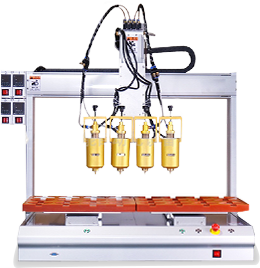

Features | Detailed description |
High strength and rigidity | High-strength metal materials are used. After stamping, the frame structure is tight and can withstand large loads and external impacts, ensuring the stability of the product structure. |
High precision and consistency | Relying on high-precision molds and automated stamping equipment, the dimensional tolerance can be controlled within ±0.03mm, and the quality of mass-produced products is stable and uniform. |
Lightweight design | The stamping process for lightweight materials such as aluminum alloy can reduce the weight of the frame while ensuring strength, meeting the lightweight requirements of aerospace, new energy vehicles and other fields. |
Strong customization capabilities | The shape, size and hole layout of the frame can be flexibly adjusted according to the customer's design drawings and usage requirements to meet personalized production needs. |
High production efficiency | The automated production line enables rapid and continuous stamping, with a daily production capacity of tens of thousands of pieces, significantly shortening the delivery cycle and meeting urgent order needs. |
Excellent surface quality | The surface of the stamped frame is flat and smooth, without obvious scratches and burrs, which is convenient for subsequent surface treatment processes such as spraying and electrophoresis. |
Material selection
High-strength alloy steel: has extremely high tensile strength and yield strength, suitable for scenes with high load-bearing requirements such as automobile chassis frames and heavy machinery support frames.
· Aluminum alloy: low density, high strength, good thermal conductivity and corrosion resistance, commonly used in aerospace equipment frames and electronic equipment heat dissipation frames.
· Stainless steel: with excellent corrosion resistance and oxidation resistance, it is widely used in fields with strict hygiene requirements such as food processing equipment frames and medical device frames.
00001. Processing technology
· Blanking: Use a mold to separate metal sheets into blanks of the required shape to determine the basic outline and size of the frame.
· Bending: Use a bending mold to bend the blank at multiple angles to shape the three-dimensional structure and connection parts of the frame.
· Punching: Punch holes of various shapes at specific positions on the frame for functional needs such as installing connectors and cable perforations.
· Forming: Use stretching, flanging, embossing and other processes to complete the processing of complex structures and detailed features of the frame.
00001. Surface treatment
· Spraying: Through electrostatic spraying, powder spraying and other processes, give the frame rich colors, while enhancing rust and wear resistance.
· Electrophoresis: Form a uniform and dense paint film on the surface of the frame to improve corrosion resistance, often used for automobile frame surface treatment.
· Anodizing: For aluminum alloy frames, generate a hard oxide film to improve surface hardness and aesthetics.
00001. Application areas
· Automotive industry: Applied to body frames and chassis structural parts to ensure vehicle collision safety and driving stability.
· Electronic communications: Used in server cabinet frames and 5G base station shell frames to provide electromagnetic shielding and heat dissipation functions.
· Aerospace: Manufacture aircraft wing frames and satellite structure frames to meet the stringent requirements of high strength and lightweight.
· Industrial equipment: As the framework of automated production lines and machine tool protection covers, it ensures the safe and reliable operation of equipment.
 Headquarters tel.
Headquarters tel. E-mail.
E-mail.